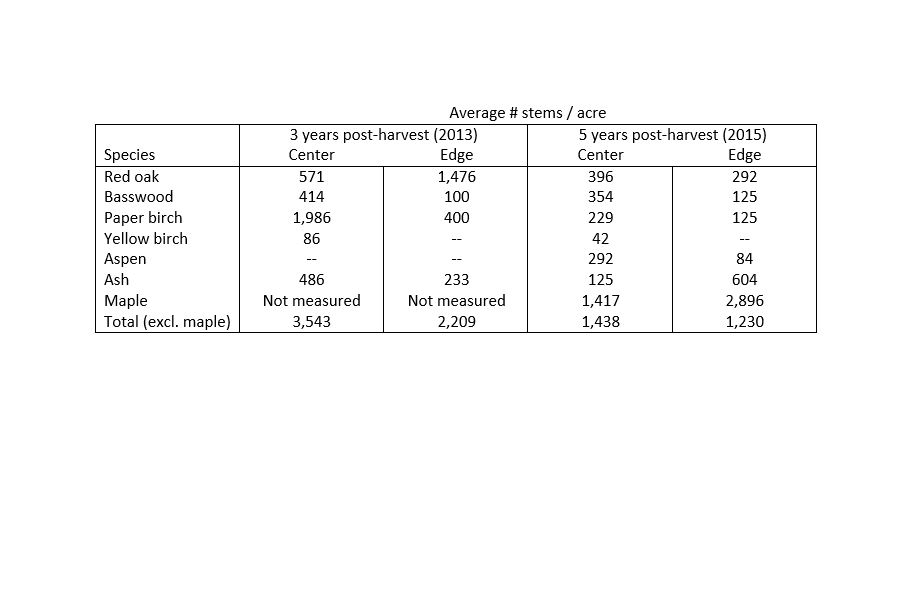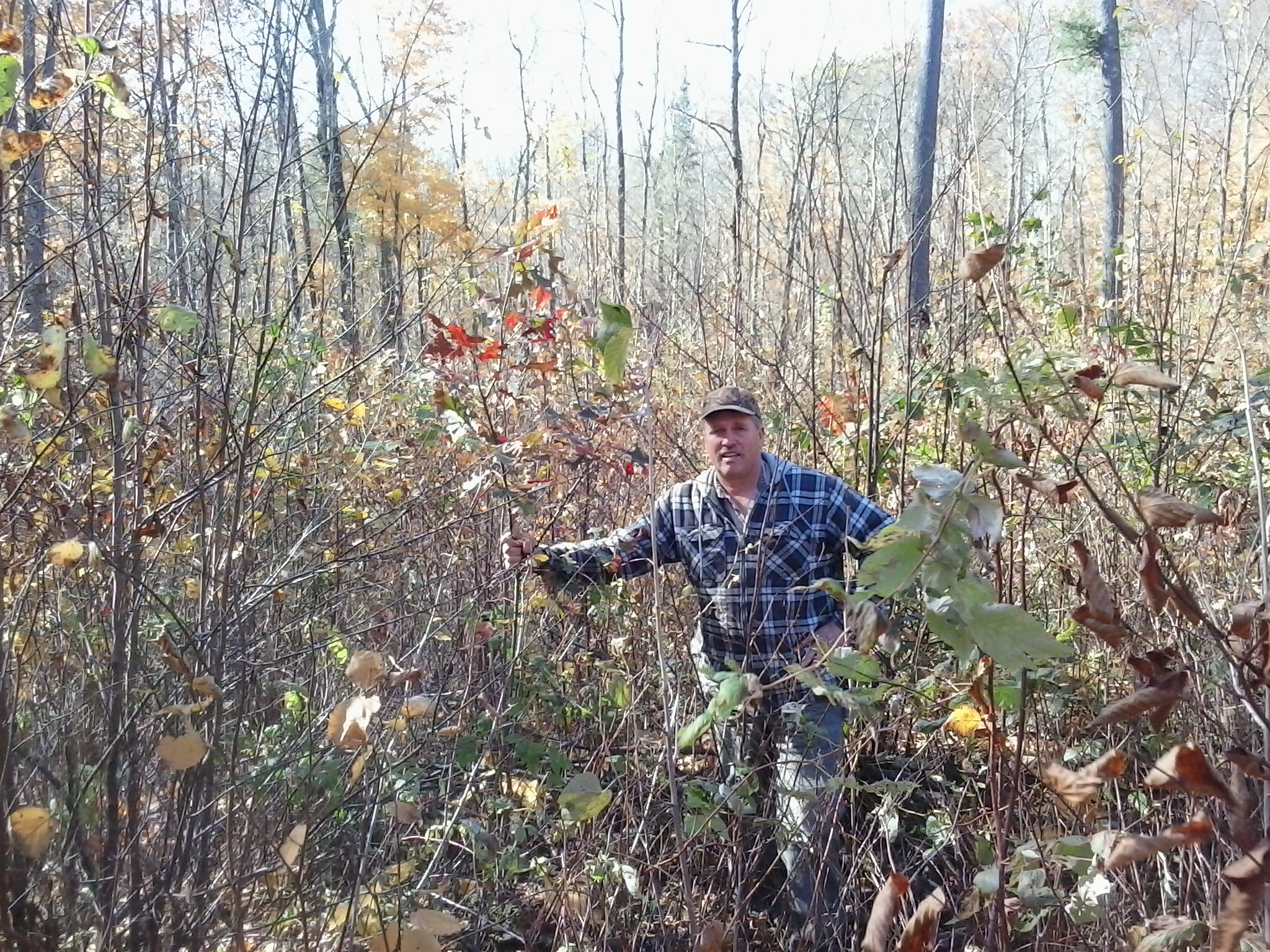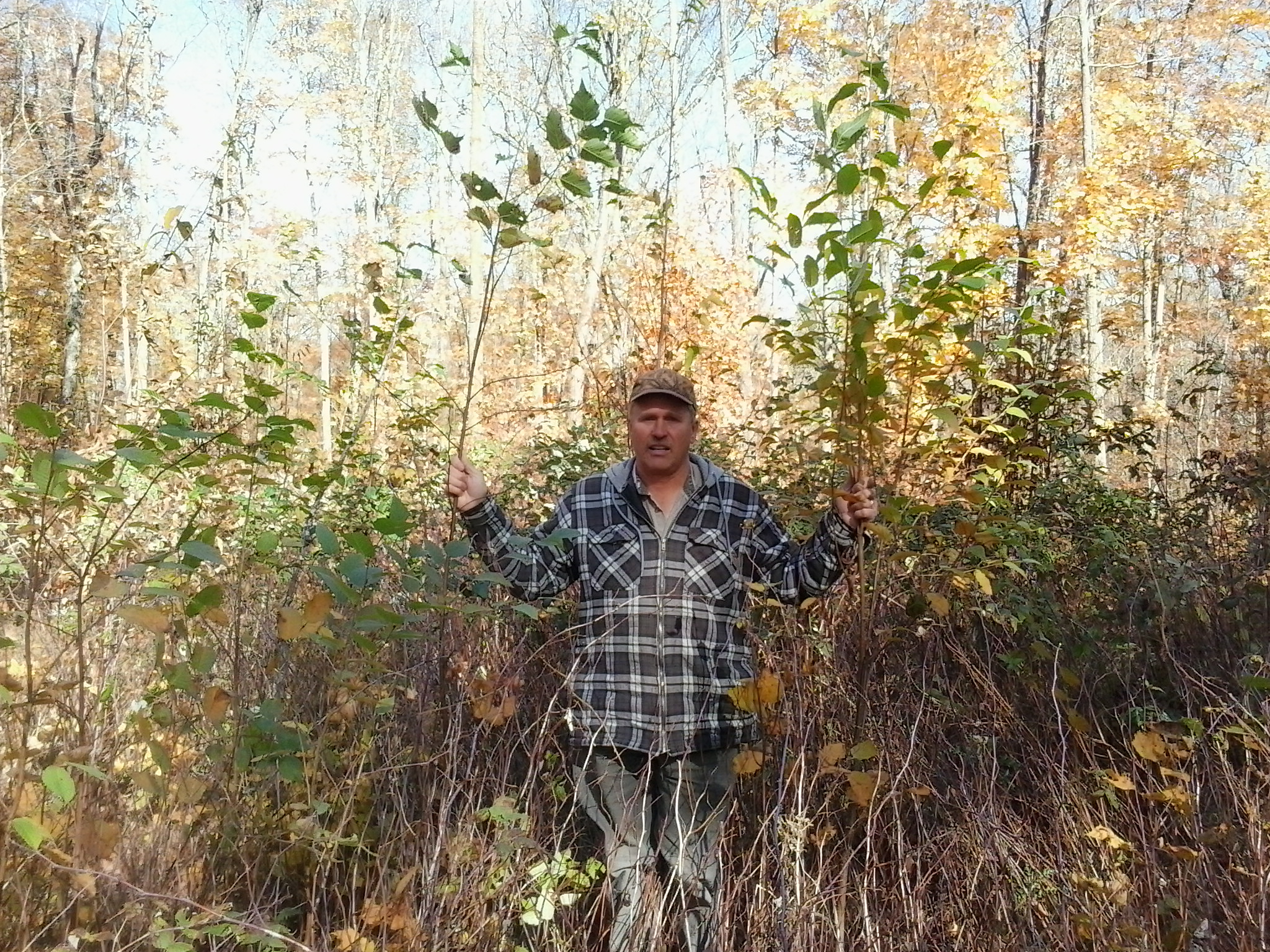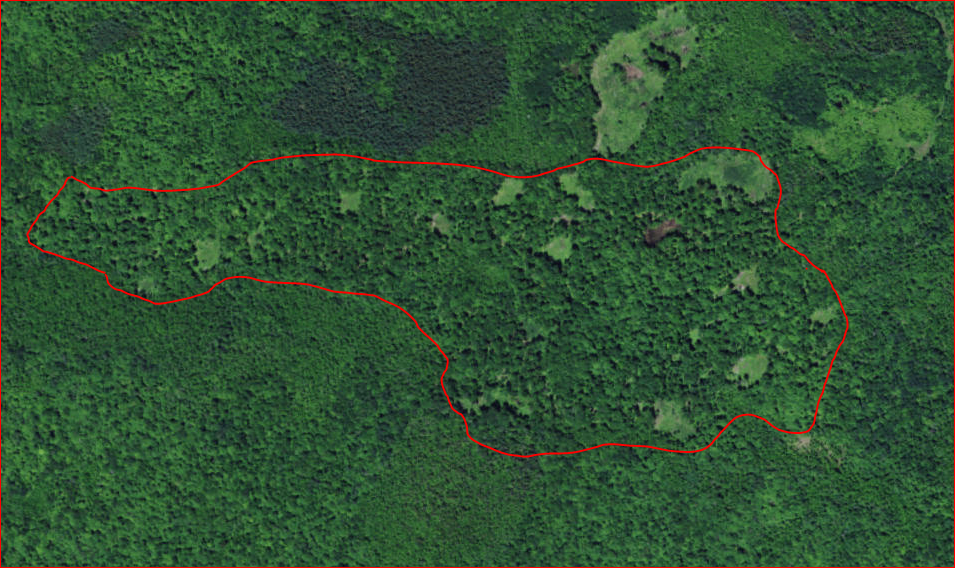Overview
Aitkin County manages over 2100 acres in sections 4,5,8,9 of Seavey Township - approximately 6-miles east of Malmo, MN (east side of Lake Mille Lacs). Much of that acreage is in high quality hardwoods 80-100 years of age. The objective in this area is to manage for large blocks of mature, closed-canopy hardwood forest. Traditional un-even age management tends to favor shade tolerant sugar maple at the expense of shade intolerant species such as oak, basswood, or birch. There had been some "selective harvesting" in the area 20+ years ago and canopy gaps created at that time now contain pole sized oak, basswood, and paper birch.
Pre-treatment stand description and condition
Pre-treatment growth and stocking:
Pre-harvest basal area
Oak = 53
Maple = 31
Aspen = 20
Birch = 14
Basswood = 10
Other = 3
Total = 131
What actually happened during the treatment
The treatment at this site was an irregular thin via crop tree release to encourage growth on quality trees with approximately 10% of the area in canopy gaps (1/3 to 1-acre gaps) to encourage regeneration of shade-intolerant species. The harvest occurred in the winter of 2010/2011 and, due in large part to timber volume from the canopy gaps, yielded over 10-cords per acre which made it economically operable for the logging operation.
Post harvest basal area
Oak = 33
Maple = 20
Aspen = 6
Birch = 7
Basswood = 7
Other = 3
Total = 76
Post Harvest
Trees/acre = 83 Average DBH = 14"
Quality trees/acre = 21 Snag Basal area = 5
Post-treatment assessment
A regeneration survey was conducted in the fall of 2013 (3-years post harvest) to monitor regeneration. Five of the canopy gaps were sampled and the initial results are encouraging for shade-intolerant species (maple seedlings were abundant but were not counted). Follow-up regeneration checks will occur at 3-5 year intervals.
Table 1: Regeneration table 2015


Figure 1: Oak regeneration, pictured October 2016

Figure 2: Oak regeneration, pictured October 2016
Plans for future treatments
It is anticipated that the next harvest entry will be in approximately 15-years.
Issue for the next entry... dispersed vs. expanding canopy (regeneration) gaps.
Submitted by
Mark Jacobs
Bob Kangas
Aitkin County, through its Land Department, is responsible for the management of more than 222,000 acres of tax forfeited land. The County has a long tradition of being a sound steward of this resource providing timber and fiber for industry, offering recreational opportunities for residents and visitors, and sustaining the ecological integrity of the land and its forests.

